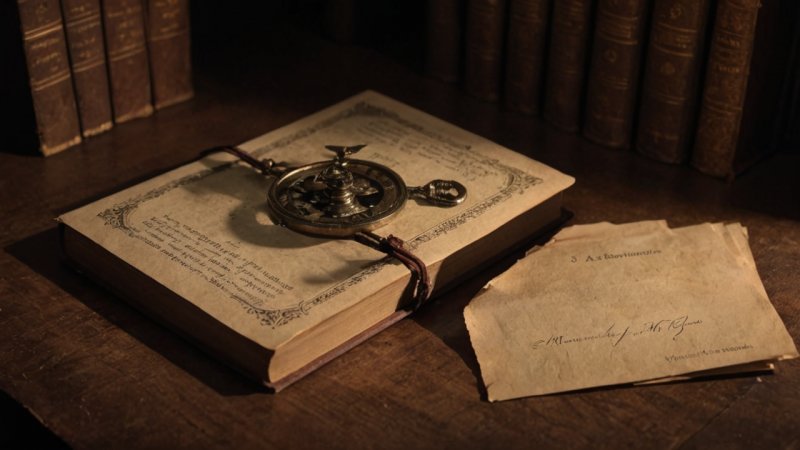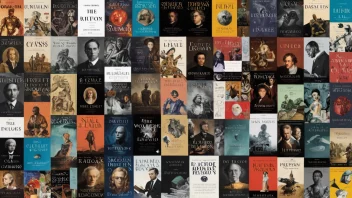Foreshadowing is a literary device that adds depth to storytelling, especially within the realm of mystery novels. It serves as a crucial tool for authors, allowing them to hint at future events and create a tapestry of suspense that keeps readers engaged. The beauty of foreshadowing lies not only in its ability to build tension but also in how it enriches the narrative, inviting readers to become active participants in unraveling the plot. Through carefully placed clues, authors can manipulate readers' expectations, leading them to conclusions that are both surprising and satisfying. In this article, we will delve into the intricacies of foreshadowing in mystery novels, exploring its techniques, the impact it has on storytelling, and some exemplary works that masterfully employ this art.
Understanding Foreshadowing
At its core, foreshadowing is a technique used to give hints about what is to come later in the story. It often takes the form of subtle clues, imagery, or dialogue that, upon reflection, can reveal a deeper meaning. The purpose of foreshadowing in mystery novels is to instill a sense of anticipation and to lay the groundwork for plot twists that are both unexpected and inevitable. Readers, when engaged in this kind of narrative, often find themselves piecing together clues, creating theories, and guessing outcomes, which heightens their investment in the story.
Techniques of Foreshadowing
Writers utilize various techniques to effectively foreshadow events in mystery novels. Some of the most common methods include:
- Symbolism: Objects, colors, or settings can serve as symbols that hint at future events. For example, a storm brewing on the horizon may symbolize impending chaos or danger.
- Dialogue: Characters may drop hints through their conversations. A seemingly innocuous comment can take on new meaning when viewed in the context of the unfolding plot.
- Imagery: Vivid descriptions can evoke feelings or themes that foreshadow future developments. A broken mirror might suggest shattered lives or hidden truths.
- Flashbacks: Brief glimpses into the past can reveal motivations or events that are pivotal to understanding the present mystery.
- Character Behavior: The actions and reactions of characters can serve as a precursor to their true intentions or the outcomes of the story.
The Impact of Foreshadowing on Mystery Novels
The impact of foreshadowing in mystery novels is multifaceted. It enhances the reading experience by:
- Creating Suspense: By hinting at future events, foreshadowing builds tension that compels readers to keep turning the pages.
- Encouraging Active Reading: Foreshadowing invites readers to pay close attention to details, making them more engaged with the narrative.
- Providing Depth: It adds layers to the story, allowing for richer character development and thematic exploration.
- Facilitating Plot Twists: Effective foreshadowing lays the groundwork for unexpected revelations, making plot twists feel logical rather than contrived.
Examples of Foreshadowing in Mystery Novels
Several renowned mystery authors have mastered the art of foreshadowing, creating narratives that resonate with readers long after the last page is turned. Here are a few notable examples:
Agatha Christie
Agatha Christie, often referred to as the Queen of Crime, is a prime example of an author who skillfully uses foreshadowing. In her novel And Then There Were None, the subtle hints about each character’s past and their eventual fate are meticulously woven into the narrative, creating a chilling sense of inevitability.
Gillian Flynn
In Gone Girl, Gillian Flynn employs foreshadowing through the unreliable narration of her characters. The shifting perspectives give readers clues about the truth behind the disappearance of Amy Dunne, leading to a shocking reveal that feels both surprising and justified.
Agatha Christie
In her classic Murder on the Orient Express, Christie plants clues that seem innocuous at first but become pivotal in the resolution of the mystery. The foreshadowing is so subtle that even seasoned readers often find themselves taken by surprise when the truth is revealed.
Writing Foreshadowing Effectively
For aspiring writers, mastering the art of foreshadowing requires a delicate balance. Here are some tips to effectively incorporate foreshadowing into your own mystery writing:
- Plan Ahead: Foreshadowing is most effective when it's well thought out. Outline your plot and determine key events that you want to hint at early in your narrative.
- Be Subtle: The best foreshadowing often goes unnoticed until the reader reflects on it later. Avoid being too overt, as heavy-handed hints can spoil the suspense.
- Use Multiple Layers: Incorporate various forms of foreshadowing to create a rich tapestry of clues. This adds depth and engages readers more fully.
- Revise: During the editing phase, ensure that your foreshadowing is consistent and that clues align with the eventual twists or reveals.
Conclusion
Foreshadowing is an essential element of mystery writing that enriches the reading experience and enhances narrative depth. By skillfully dropping hints and creating an atmosphere of suspense, authors invite readers to engage actively with the story. As we’ve explored through examples and techniques, the art of foreshadowing can transform a simple narrative into a complex web of intrigue that captivates and surprises. Whether you’re a reader savoring the thrill of a well-crafted mystery or a writer seeking to hone your craft, understanding and applying foreshadowing can elevate your appreciation and execution of this timeless literary device.






